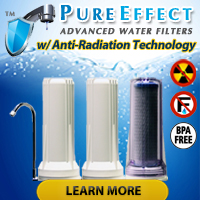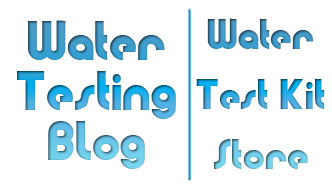Another misconception about reverse osmosis deals with the notion that reverse osmosis always makes water acidic. While certainly true that reverse osmosis tends to reduce the pH of a water supply, if the source water starts out with a high pH then the possibility exists that the reverse osmosis filtration process could actually correct the pH level back to neutral (approximately 7).
Measuring pH of your water
If your source water has an inherent low pH then your water may start to slowly, or quite rapidly in some cases, cause your plumbing and fixtures to begin corroding. You will not know if you have a pH problem unless you test your water’s pH using simple ‘dip and read’ test strips or an electronic pH Meter.
Interpreting pH testing results
Science states that…
– Water with a pH of 7.0 has a neutral, meaning not acidic and also not basic, pH.
– Water with a pH greater than 7.0 will more than likely exhibit basic, or alkaline tendencies.
– Water with a pH less than 7.0 will more than likely exhibit acidic tendencies.
Note: We used the phrase ‘more than likely’ just now because certain water conditions can render acidic or basic water less corrosive than expected, but as a general rule the further away from 7.0 that the pH of source water strays, the more destructive that water will become.
Correcting pH levels in source water
More than likely if you have issues with acidic water in your home or office you will want to treat your water using a point-of-entry device (such as a whole house water filter) rather than a point-of-use water filter (like a faucet, under sink or counter top water filter). Treating the water before it passes through your plumbing should help to prolong the life of your pipes and plumbing fixtures.
A whole house system such as the Crystal Quest Dual Tank Water Softener and Acid Neturalizer System offers a combination of a 20″ sediment filter, ion exchange water softening, an acid neutralizing media tank, and a 20″ solid carbon block filter.
While the purposes of acid neutralizing tank and water softening tank probably need no explaining, the purposes of the 20″ sediment filter and 20″ solid carbon block filter may.
By removing (unwanted) solids from the water the 20″ sediment filter will not only improves the quality of the water, but it also helps to prolong the life of the other filter components by preventing clogging. This should also mean fewer required backwash cycles, as well, for the system.
The 20″ carbon block filter reduces and/or removes volatile organic carbon compounds (VOC’s) such as insecticides, pesticides and industrial solvents — if present in the source water.
Correcting the pH of reverse osmosis water
Many reverse osmosis units these days come with the option of having a pH correcting ‘remineralizer’ post-filter installed for a very low cost. These inline filters put back desired minerals that make water taste like, well, the water we like to drink rather than flat tasting heavily filtered water and also adjust the pH back to around 7.0.
Moral of the story
Before installing ANY water treatment system ALWAYS have water tested thoroughly so that you don’t accidentally purchase (and install) a water filter that treats your water for the wrong issues.






